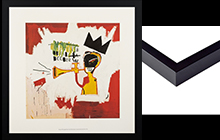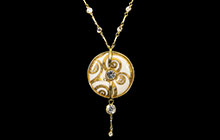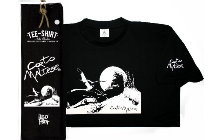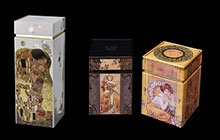Delivery with DHL Express(1 to 5 Days)
All our products are IN stock - IMMEDIATE Shipping
- Passion Estampes Browsing
- Home
- Novelties
- Artists
- Wall decoration
- Products & Gift ideas
- Art Prints
- Lithographs
- Jewels
- Scarves
- Ties
- Tableware
- Puzzles
- Comics world
Novelties
Artists
Art Prints - Posters
Wall decoration
Lithographs
Scarves
Ties
Jewels
Tableware
Puzzles
Products & Gift ideas
Comics world
Contact us
William MORRIS Pendant
"Owl"
Brass plated pendant and chain.
Ø : 3 cm
Weight : 17 gr
Chain : 45 cm
The metal components are antiallergic and nickel-free.
The jewel is presented in its beautiful box.
Availability :
in stock
in stock
35.00 €
-
 Scarves
Scarves2 models
-
 Ties
Tiessilk ties
-
 Jewelry
JewelryPendant & earrings
-
 Art of entertaining
Art of entertainingPorcelains & Glasses
-
 Puzzles
Puzzles1000p
William MORRIS (1834-1896 England)
* * *
Main works :
As a writer, he was credited with "The Earthly Paradise" in 1870, "The Pilgrims of Hope" in 1885 and "News from Nowhere, or an Epoch of Rest" in 1890. As a designer, "Acanthus", "Snakeshead", "Woodpecker", "Kennet", "Bullerwood", "Seaweed" and "Daffodile" are striking patterns and creations.Artistic movements :
Pre-Raphaelism and Arts and Crafts, of which he was the most active representative.Inspiration, influence :
The Italian Primitives (Fra Angelico) and the art of the Middle Ages mark and influence his work. But it was especially what he hated (the Victorian bourgeois taste) that created part of his path. Morris thought that the Industrial Revolution had standardised objects for profit by taking away their creativity and quality... A fight that still resonates with the modern era that is ours !His contemporaries :
Jane Burden, a favourite model of the Pre-aphelians, became his wife and the mother of his two daughters. John Ruskin, a writer and art critic, reflected on the dangers of restoring architecture, which, by modernizing it, made it lose the essence of his original creation.To keep in mind :
William Morris is difficult to catalog because if he was a writer and poet, he was no less designer and printer! As such it designed for example typographies that marked and influenced the 20th century edition. Similarly, his political commitment, which was at the origin of the creation of the British Socialist Party, was an important, if not primordial, part of his life and also influenced his creative work. The modernity of his gaze, especially on ecology or gender equality is also noteworthy, as it was rare in the Victorian era. Willam Morris’s influence on art in the broad sense of the term was really taken into account more than a century after the beginning of his work so much this influence imprinted with various and lasting forms.’s influence on art in the broad sense of the term was really taken into account more than a century after the beginning of his work so much this influence imprinted with various and lasting forms.To go further :
If his heart beat to the rhythm of equality (Marx’s writings greatly contributed to his vision of the world), especially financial, he would not see in his career as a businessman an an obvious ambivalence. Thus his works, made in very small numbers, with noble materials, were only reserved for a wealthy public...Our website uses session cookies
Our website uses session cookies to improve site navigation and to enhance your online experience by maintaining information from page to page within these applications. Cookies allow us to personalize the content and facilitate your access to the shopping cart, offer social media features and analyze our traffic.
International shipping every day from monday to friday

































